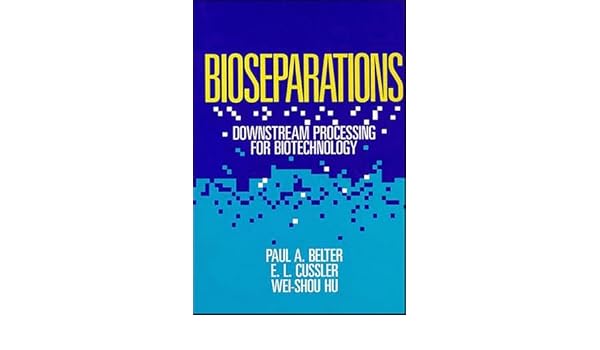Downstream Processing Industrial Biotechnology Pdf
Jun 5, 2015 - The sole responsibility of this publicamon lies with the author. The European Union is not responsible for any use that may be made of the informamon contained therein. Downstream processing and process integration. BioREFINE-2G Workshop: Bioplastics from 2nd Generation Biorefineries. Key factor for industrial biotechnology and biotransformations today [1, 2]. The significant amount of work, energy, and equipment. Comprehensive Biotechnology, Second Edition, 2011, Vol. 2, 591-601, DOI: 10.1016/B978-0-08-088504-9.00135-5. Author's personal copy. 592 Downstream Processing and Product. 2 Sustainable resource microalgae. 3 Process chain for the integrated synthesis of platform chemicals for the chemical industry. PRODUCTS biotechnological transformation enzyme screening and -optimization chemical transformation reprocessing. (downstream processing) processing of raw materials. Industrial biotechnology involves the use of enzymes and. Up industrial application of biotechnology. The advancement in downstream processing tech.
ADVERTISEMENTS: This article throws light upon the five stages in downstream processing. The five stages are: (1) Solid-Liquid Separation (2) Release of Intracellular Products (3) Concentration (4) Purification by Chromatography and (5) Formulation. 20.1, an outline of the major steps in downstream processing is given.
Solid-Liquid Separation: The first step in product recovery is the separation of whole cells (cell biomass) and other insoluble ingredients from the culture broth (Note: If the desired product is an intracellular metabolite, it must be released from the cells before subjecting to solid-liquid separation). Some authors use the term harvesting of microbial cells for the separation of cells from the culture medium. Several methods are in use for solid-liquid separation. These include flotation, flocculation, filtration and centrifugation. ADVERTISEMENTS: When a gas is introduced into the liquid broth, it forms bubbles. Serial Number For Dss Player Pro.
The cells and other solid particles get adsorbed on gas bubbles. These bubbles rise to the foam layer which can be collected and removed. The presence of certain substances, referred to as collector substances, facilitates stable foam formation e.g., long chain fatty acids, amines. Flocculation: In flocculation, the cells (or cell debris) form large aggregates to settle down for easy removal. The process of flocculation depends on the nature of cells and the ionic constituents of the medium. Addition of flocculating agents (inorganic salt, organic polyelectrolyte, mineral hydrocolloid) is often necessary to achieve appropriate flocculation. Filtration: Filtration is the most commonly used technique for separating the biomass and culture filtrate.
The efficiency of filtration depends on many factors— the size of the organism, presence of other organisms, viscosity of the medium, and temperature. Several filters such as depth filters, absolute filters, rotary drum vacuum filters and membrane filters are in use. ADVERTISEMENTS: Depth Filters: They are composed of a filamentous matrix such as glass wool, asbestos or filter paper. The particles are trapped within the matrix and the fluid passes out.
Filamentous fungi can be removed by using depth filters. Absolute Filters: These filters are with specific pore sizes that are smaller than the particles to be removed. Bacteria from culture medium can be removed by absolute filters. Rotary Drum Vacuum Filters: These filters are frequently used for separation of broth containing 10-40% solids (by volume) and particles in the size of 0.5-10µm.
Rotary drum vacuum filters have been successfully used for filtration of yeast cells and filamentous fungi. The equipment is simple with low power consumption and is easy to operate. The filtration unit consists of a rotating drum partially immersed in a tank of broth (Fig.

As the drum rotates, it picks up the biomass which gets deposited as a cake on the drum surface. This filter cake can be easily removed. Membrane Filters. ADVERTISEMENTS: In this type of filtration, membranes with specific pore sizes can be used. However, clogging of filters is a major limitation. There are two types of membrane filtrations—static filtration and cross-flow filtration (Fig.
Navionics Cracked Screen. In cross-flow filtration, the culture broth is pumped in a crosswise fashion across the membrane. This reduces the clogging process and hence better than the static filtration.